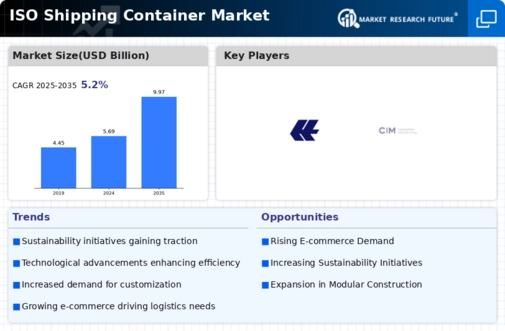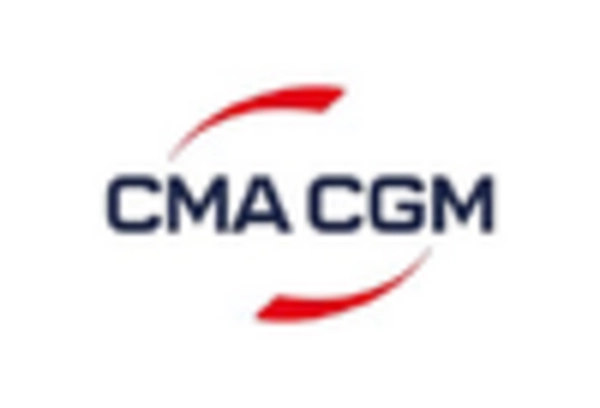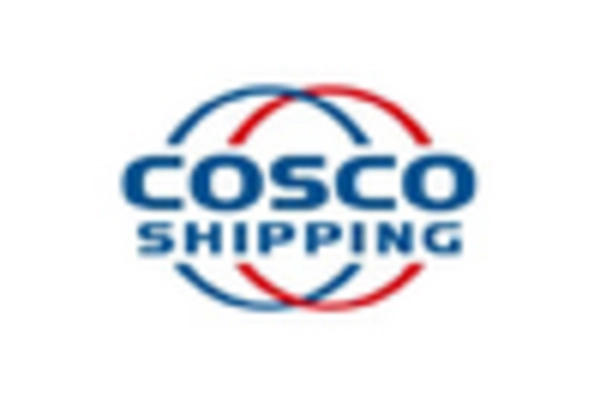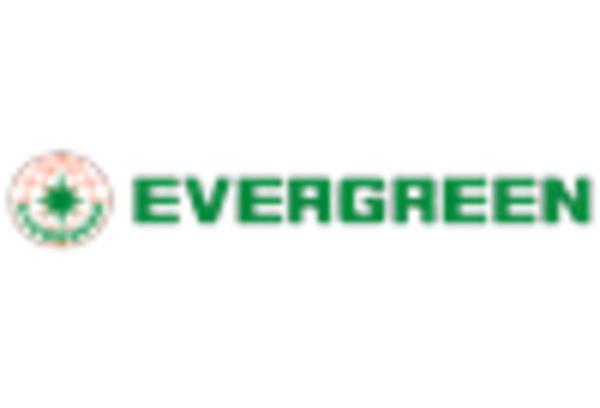Market Trends
Key Emerging Trends in the ISO Shipping Container Market
Numerous strategic initiatives, most notably China's Belt and Road Initiative (BRI), have spurred substantial investments in diverse ports situated across Southeast Asia. Countries like Myanmar and Malaysia, nestled within the ambit of this visionary undertaking, have experienced a noteworthy surge in investments that is poised to reshape the landscape of shipping ports in the region. The Belt and Road Initiative, unveiled by China, seeks to establish a comprehensive network of maritime and land-based trade routes, fostering enhanced connectivity and economic collaboration across a multitude of nations.
Against the backdrop of this regional transformation, a discernible oversupply of container ships has emerged, coinciding with the global uptick in seaborne trade. The surplus in container ship capacity is notably aligned with the escalating import demands emanating from China. Projections indicate that the import requirements of the world's second-largest economy are slated to surge in the foreseeable future. This surge is intricately tied to the nation's burgeoning middle class and its growing appetite for a diverse array of goods sourced from across the globe.
Moreover, China has embarked on a significant trajectory of investment to augment its port infrastructure and shipping capabilities. The aim is to fortify the nation's maritime prowess and accommodate the mounting demands of its flourishing trade activities. This ambitious endeavor is poised to exert a profound influence on the global demand for shipping containers, as the expanded capacity and efficiency of Chinese ports catalyze a ripple effect throughout the interconnected web of international trade.
As the Belt and Road Initiative unfurls its transformative impact, the implications for the shipping container market are multifold. The increased connectivity between Southeast Asia and China, facilitated by enhanced port infrastructure, is anticipated to amplify trade volumes and necessitate a commensurate augmentation in the availability of shipping containers. The symbiotic relationship between investment-driven port expansion and the demand for shipping containers is a testament to the intricate interplay of global economic dynamics.
In essence, the oversupply of container ships against the backdrop of robust seaborne trade, coupled with China's expansive import requirements and strategic port investments, converges to shape the evolving narrative of the shipping container market. As the global economy navigates through the intricate currents of international trade, the repercussions of these developments resonate not only in the immediate vicinity but reverberate across the broader spectrum of maritime commerce. The dynamism of these factors underscores the fluid nature of the shipping container market, with ongoing transformations in infrastructure and trade patterns heralding a new era for global shipping dynamics.

















Leave a Comment